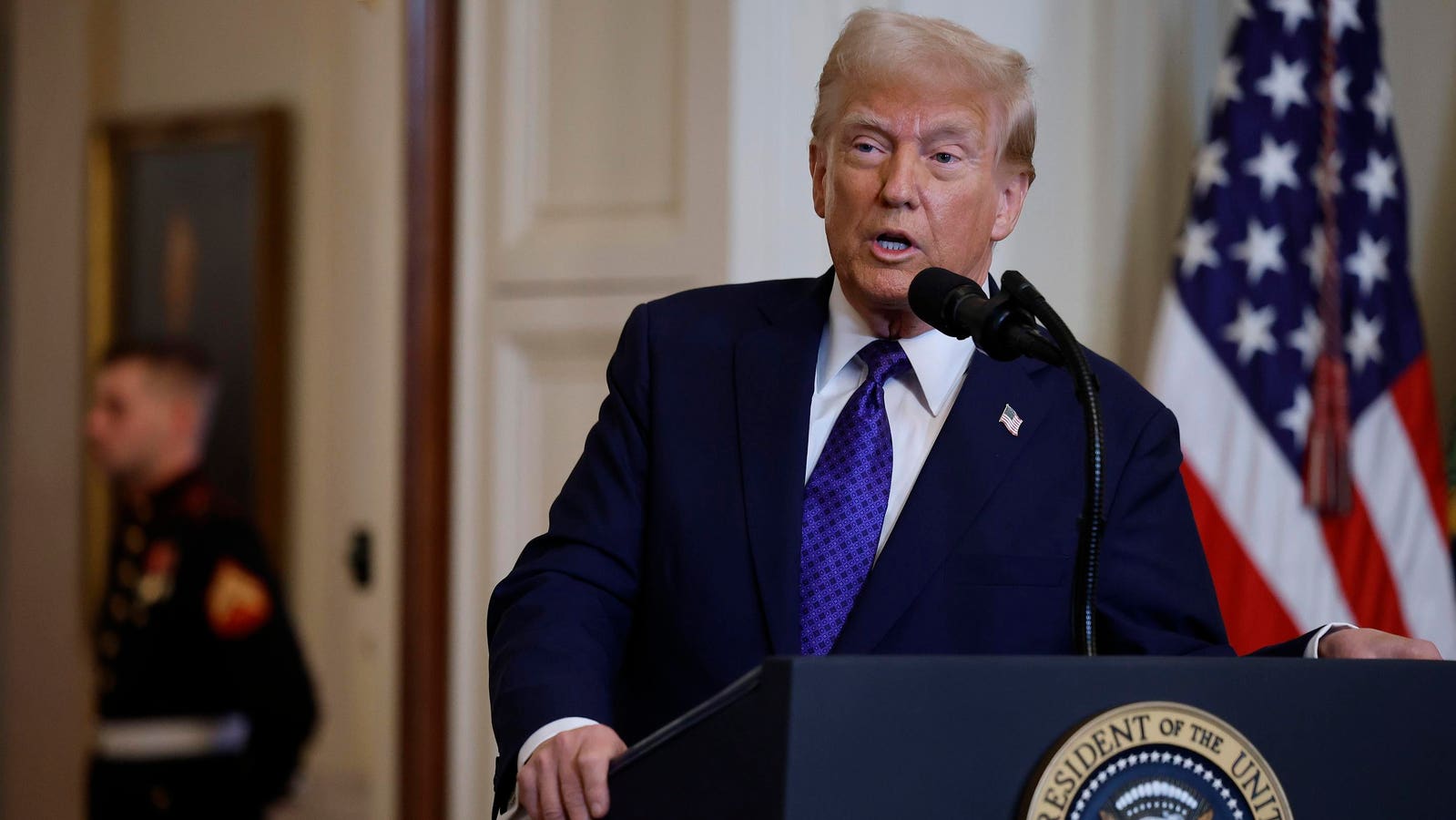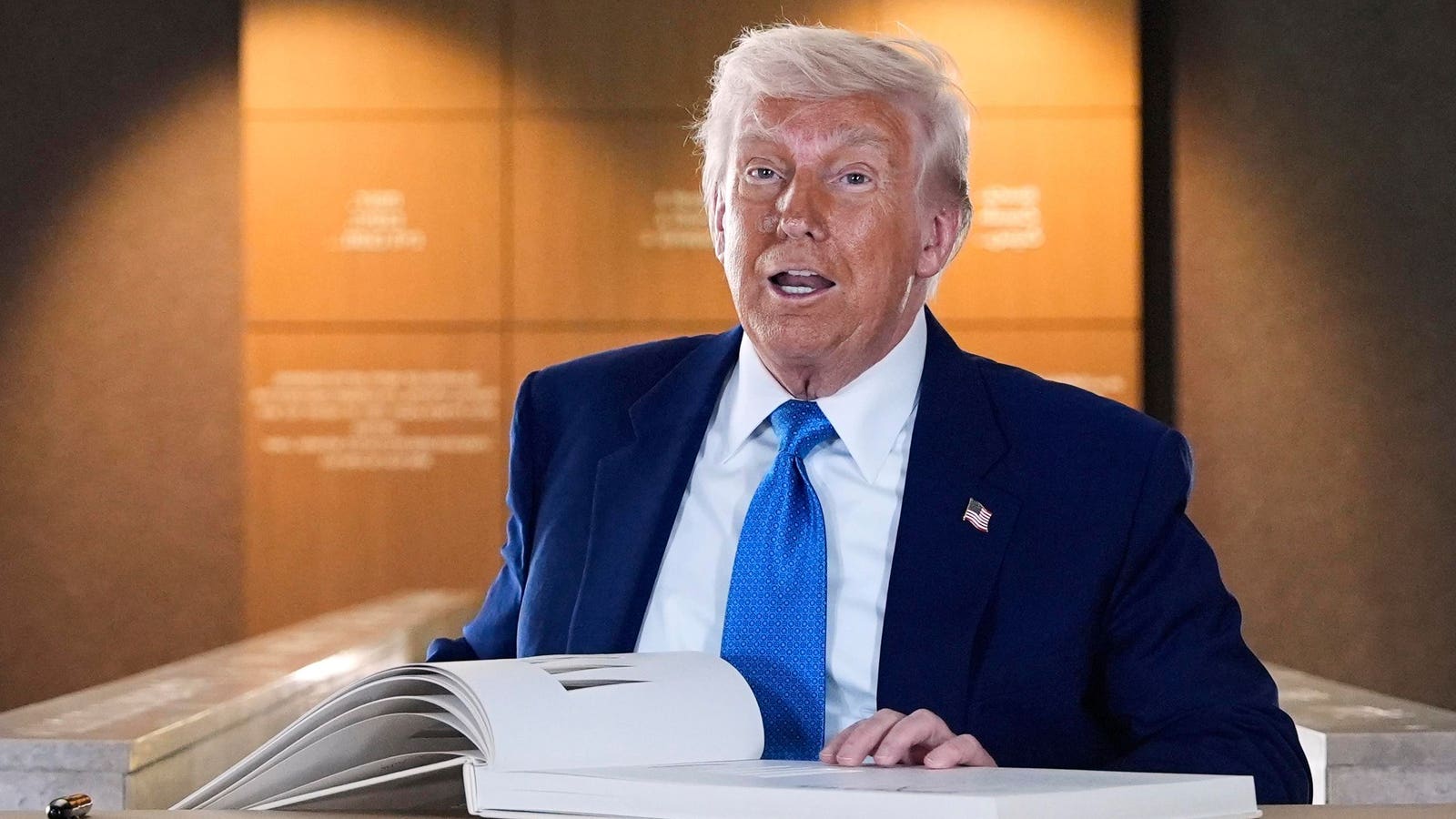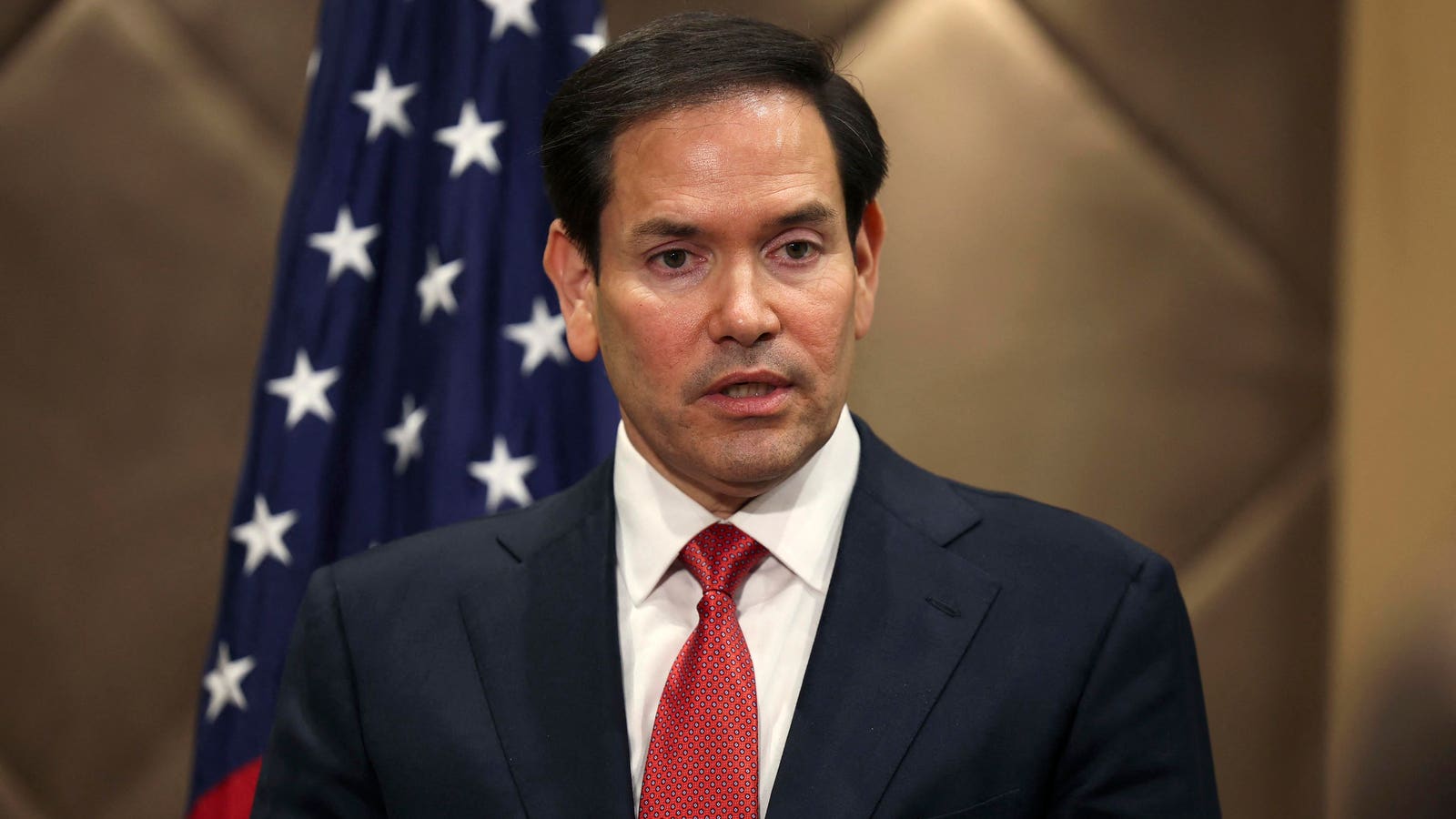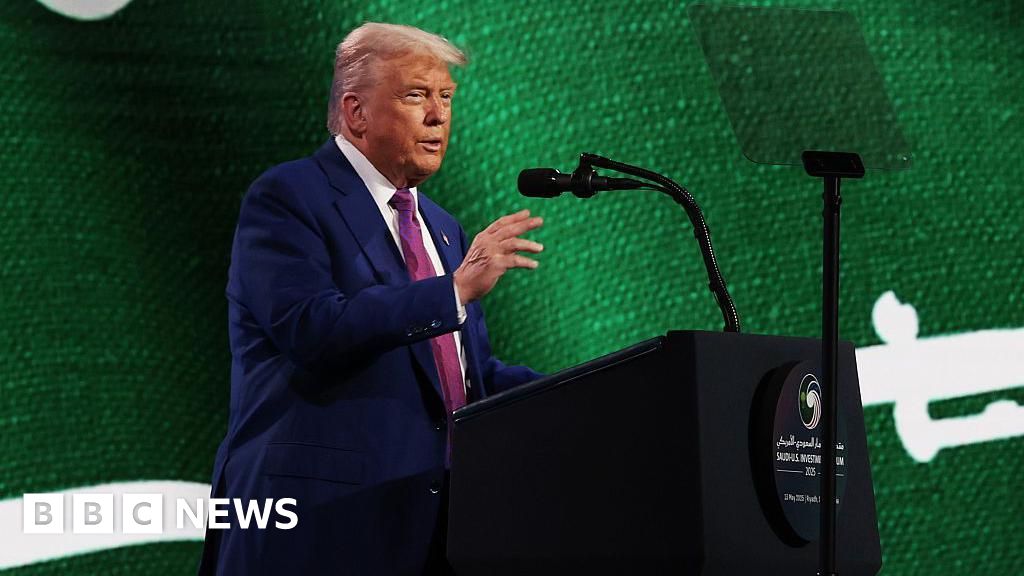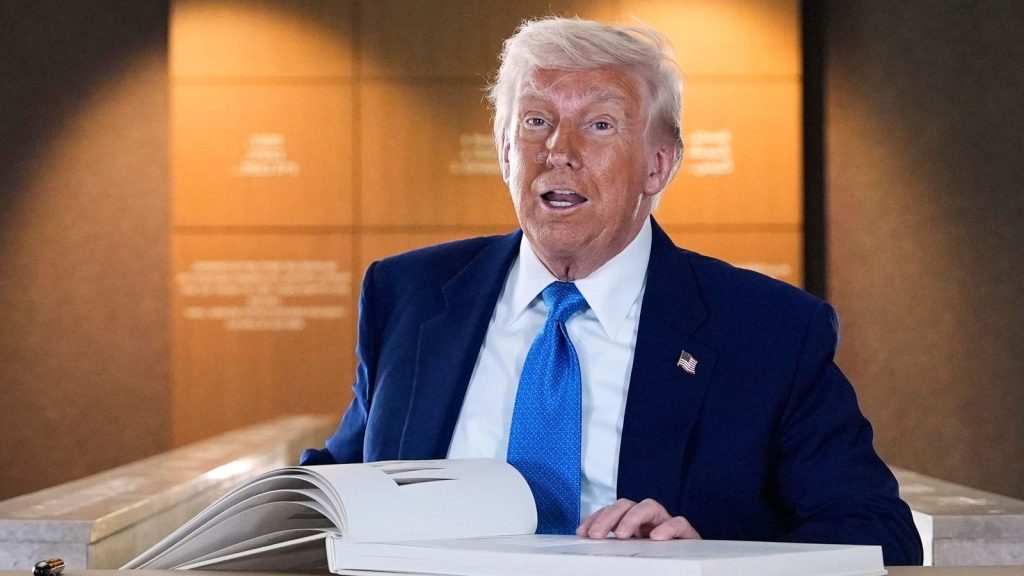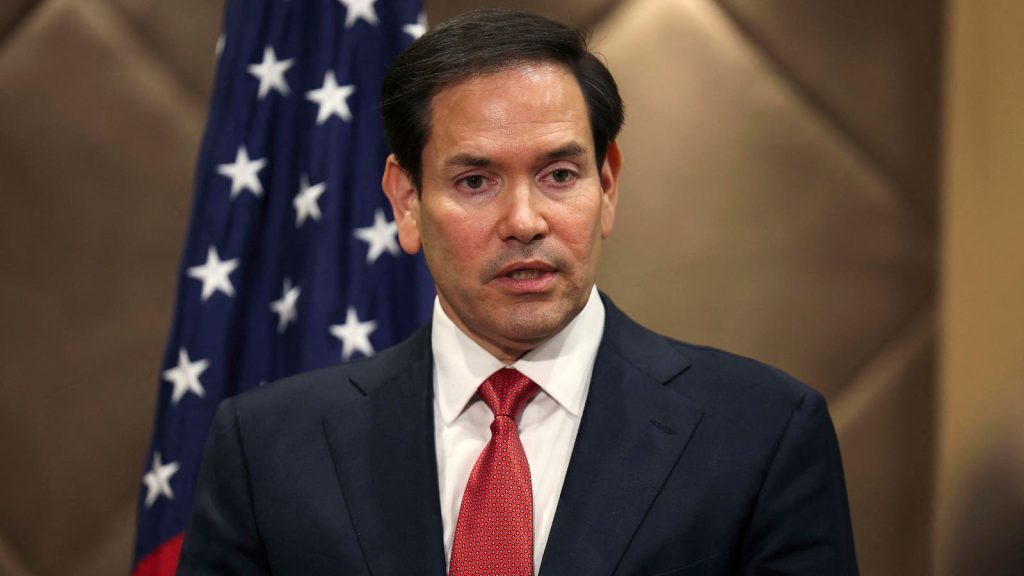Topline
President Donald Trump said on social media Thursday he is “working on papers to withhold all Federal Funding” from sanctuary cities, or cities with policies in place limiting how much they will cooperate with federal agencies on deporting migrants, following through on an action outlined in one of his first executive orders earlier this year.
President Donald Trump delivers remarks before signing the Laken Riley Act, the first piece of … More legislation passed during his second term in office, in the East Room of the White House on January 29, 2025 in Washington, DC.
Key Facts
Trump said on Truth Social that sanctuary cities “protect the Criminals, not the Victims,” “are disgracing our Country, and are being mocked all over the World.”
Withholding federal funding from cities and states was an element of his Jan. 20 executive order titled, “Protecting The American People Against Invasion.”
In the executive order, Trump defined sanctuary jurisdictions as cities and states that “seek to interfere with the lawful exercise of Federal law enforcement operations.”
Forbes has reached out to the White House for details of how much federal funding Trump wants to withhold.
Get Forbes Breaking News Text Alerts: We’re launching text message alerts so you’ll always know the biggest stories shaping the day’s headlines. Text “Alerts” to (201) 335-0739 or sign up here.
What Are Major Sanctuary Cities?
Major sanctuary cities include New York City, Denver, Seattle, Chicago, San Francisco and Philadelphia. The New York Times estimated earlier this year there were about a dozen states that considered themselves sanctuaries, and hundreds of cities—though there is no set definition.
What Kind Of Rules Do Sanctuary Jurisdictions Have?
Sanctuary cities generally have policies in place that define the extent to which local governments can share information with federal immigration officers. San Francisco, for example, has policies prohibiting employees from “using city funds or resources to assist Immigration and Customs Enforcement in the enforcement of Federal immigration law unless such assistance is required by federal or state law.” The policies also prevent city employees from asking about immigration status on city applications, limiting services based on immigration status, giving release information to ICE and more.
Key Background
Trump has made cracking down on immigration a key element of his presidency thus far. He has sought to ramp up deportations of undocumented immigrants, curb asylum and refugee admissions and he used immigration, along with fentanyl, as a reason to place tariffs on Canada and Mexico. A number of Trump’s attempts at deporting immigrants have faced legal challenges, including his administration’s decision to send more than 250 alleged members of a Venezuelan gang to El Salvador. The administration has also faced criticism for deporting people without criminal backgrounds, who have been misidentified or who were simply sent out of the country by mistake. The Trump administration has also received criticism for revoking student visas and targeting student protesters in its deportation efforts.
Tangent
Trump tried a similar move during his first term in 2017 when he signed an executive order alleging sanctuary jurisdictions had “caused immeasurable harm to the American people and to the very fabric of our Republic,” and it was challenged in court by New York City and seven states. The states won initially and were backed up by three appeals courts, Politico reported, but the New York-based 2nd Circuit Court of Appeals ultimately ruled in Trump’s favor. The Trump policy was reversed by former President Joe Biden’s administration.
Further Reading
What Are Sanctuary Cities, and Do They Need to Cooperate With Trump’s Mass Deportation Plans? (New York Times)
Did Trump Administration Ignore A Court Order? Judge Demands Trump Officials Explain (Forbes)

